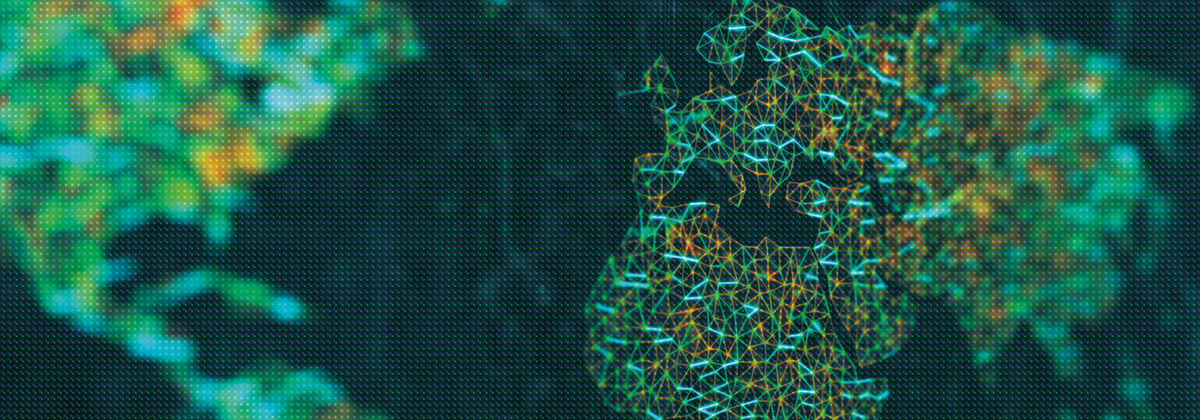The most popular questions these days aren’t so much about what’s going on in the macro space. They’re about things ranging from the rise of SPACs, or special purpose acquisition companies, to cryptocurrencies and the role of retail trading. Pockets of investors seem to worry that ‘excessive exuberance’ could create instability in the marketplace. Others appear to believe that these are signs of important structural changes and so should be seen through these lenses. To us, they all seem partly related to the unintended consequences of the structurally low-rates environment we’re in. Central banks have no choice other than keeping governments’ funding costs at affordable levels, so that they can continue to provide fiscal stimulus. While this supports the economy, it can also amplify market trends already in the making and result in volatility popping up in unexpected places.
The opportunity | Capital raising in the 21st century: SPACs are investment vehicles that raise money from public investors by holding an initial public offering and then use these IPO funds to purchase stakes in and merge with private companies, taking them public in the process. They’re very popular right now because they offer a faster, easier way for private companies to go public. Basically, SPACs exist to do one thing: to take private companies such as startups public, serving as an alternative to a traditional IPO. SPACs typically have between a year and a half and two years to complete a merger with a private company – if that doesn’t occur, they refund the IPO proceeds to their investors and the SPAC is dissolved.
The risk | (Perhaps) too much of a good thing: 46 SPACs completed IPOs in 2018, 59 in 2019 and 248 last year – a number that’s almost four times as high as the previous record. Already this year, there have been more than 130 additional SPAC IPOs through mid-February. One risk is that the number of SPACs being formed and going public may be growing very rapidly: there are now so many of them that some investors, every now and then, may end up chasing ‘bad’ deals. However, this risk isn’t necessarily specific to this type of investment vehicles. There’s a critical micro dimension that applies more broadly to each and everything that has to do with IPOs, private companies and startups, especially when things more very fast.
Here’s why this matters:
Backstopping an exceptional cycle: The fact that monetary and fiscal policies are so loose, of course, is because of the nature of the shock the global economy is facing. The Covid-19 pandemic triggered the first-ever recession by decree. Above all, this is a health crisis. Economic activity did shrink because of the lockdowns to contain the virus outbreak. Therefore, with no ‘bad actors’ under pressure to accelerate balance-sheet repair, policy can only be very supportive. And, with central banks having already cut rates to or below zero and pushed long-term yields lower across the curve, the way they help these days is by maintain funding costs at affordable levels for governments to borrow and deploy large stimulus programmes. This is continuing to provide significant tailwinds to asset markets, by reducing the discount factor applied to future cashflows – with is key for long-duration equities. However, under certain conditions this can also create financial instability.
The side-effects of ultra-loose policy: Negative real interest rates, alongside a backdrop of economic recovery, can provide the sort of environment in which asset prices can rise rapidly – and in corners of the market that are more difficult to anticipate. Put differently, financial vulnerabilities can stem, unintentionally, from extremely expansionary monetary and fiscal policies. Easy financing opportunities and an ongoing hunt for extra yield can turbocharge these trends. More broadly, take the huge amount of stimulus that has been pumped into the US economy: substantial government cheques plus restrictions on consumer spending resulting from lockdowns have nearly doubled the US personal saving rate from more than 7% of disposable income at the end of 2019 to just under 14% at the end of 2020. With real rates deep in negative territory, some of this money has inevitably been pushed into asset market – which are seeing greater retail participation these days.
Meanwhile, watch the response to the pandemic…
Diverging trends: The key macro releases continue to suggest that the US path is relatively resilient, with a bumper gain in retail sales. While extrapolating from a single data point isn’t a sensible approach, activity should pick up next quarter, when we expect the vaccination effort to gather pace and pent-up demand to be released following the easing of restrictions and yet another large fiscal stimulus package – which should further increase already large ‘forced’ savings. The US consumer confidence report may be helpful to assess the outlook for private consumption. In Europe, where lockdowns are tougher, the key high-frequency indicators are consistent with continued weakness, but not further deterioration. February’s purchasing managers’ indices point to a possible trough at the start of the year. Investors may be looking into whether the German Ifo business climate confirms this nascent trend. In the UK, Prime Minister Johnson looks set to announce a reopening roadmap today.
Daniele Antonucci | Chief Economist & Macro Strategist







